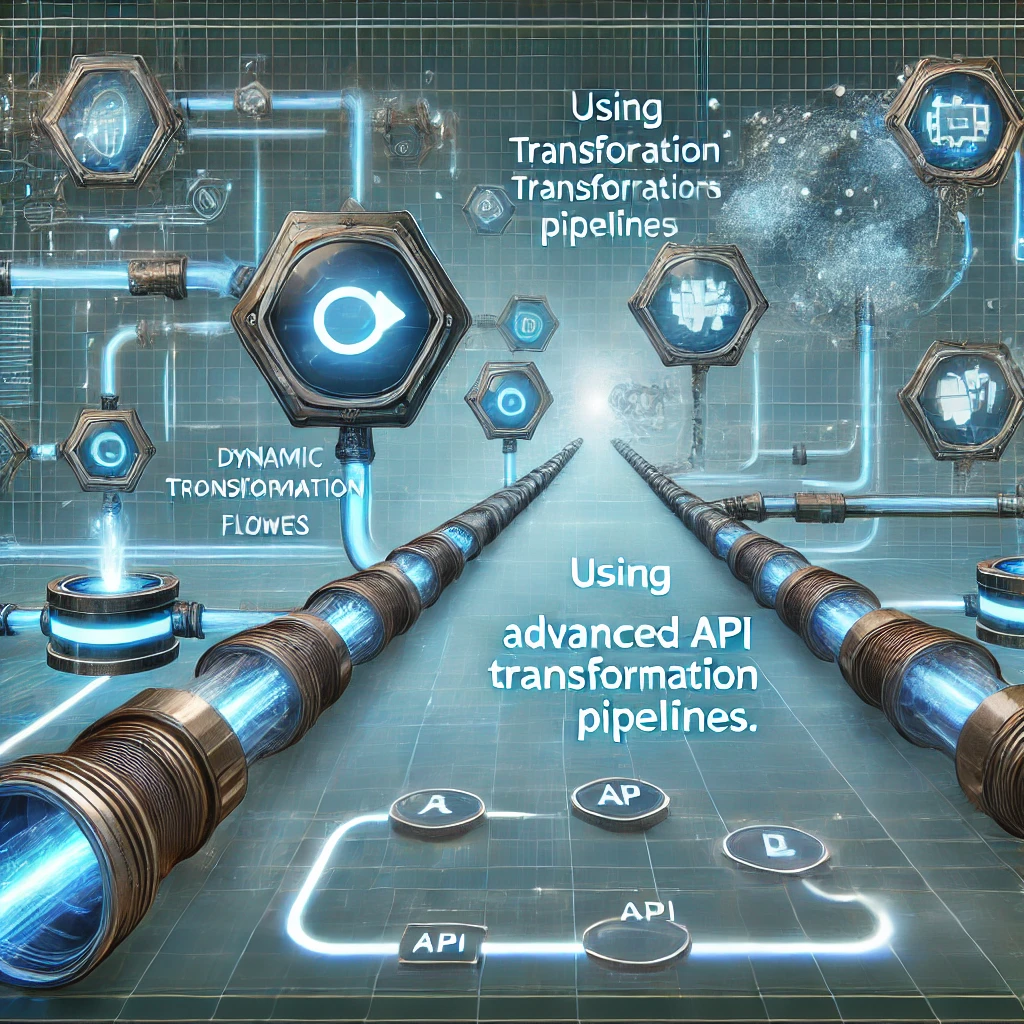Using Syncloop for Advanced API Transformation Pipelines

The Need for API Transformation Pipelines
Data transformation pipelines are crucial for:
- Interoperability: Ensuring compatibility between systems with different data formats.
- Data Standardization: Converting raw data into structured formats for better usability.
- Enhanced Performance: Reducing the overhead of data processing on client systems.
- Automation: Automating repetitive data transformation tasks to save time and resources.
Syncloop provides a centralized platform to manage these transformations with features tailored for scalability and efficiency.
Key Features of Syncloop for API Transformation
1. Data Transformers
Syncloop’s Transformers allow developers to manipulate API payloads, including reformatting, sanitizing, and merging data.
2. Workflow Automation
With tools like Ifelse and Await, Syncloop enables the creation of dynamic workflows that handle conditional transformations and asynchronous operations.
3. Schema Validation
Syncloop validates incoming and outgoing data against predefined schemas, ensuring consistency across systems.
4. Real-Time Monitoring
Track the performance of transformation pipelines using Syncloop’s real-time monitoring tools, identifying bottlenecks and optimizing processes.
5. Error Handling and Recovery
Redo controls and fallback workflows ensure errors in transformation pipelines are handled gracefully, minimizing disruptions.
6. Scalable Infrastructure
Syncloop’s scalable architecture supports high-volume data transformations, ensuring performance remains consistent under heavy loads.
Building an API Transformation Pipeline with Syncloop
Step 1: Identify Data Sources and Formats
List all APIs and data formats involved in the transformation pipeline. Define the desired output formats for each target system.
Step 2: Configure API Endpoints
In Syncloop, set up endpoints for each API. Use data transformers to specify how input data should be processed.
Step 3: Design Transformation Workflows
Create workflows to manage the flow of data through the pipeline. Use Syncloop features such as:
- Transformers: Reformat and sanitize incoming data.
- Ifelse: Apply conditional logic for specific transformation scenarios.
- Await: Handle asynchronous tasks, such as fetching additional data.
Step 4: Validate Data
Define schemas for all data formats in the pipeline. Syncloop automatically validates data against these schemas to ensure accuracy.
Step 5: Test the Pipeline
Simulate API requests to test the transformation pipeline. Validate that outputs match expected formats and address any errors.
Step 6: Monitor and Optimize
Use Syncloop’s monitoring tools to track performance metrics like latency and throughput. Optimize workflows to handle higher volumes or reduce processing time.
Real-World Applications
1. E-Commerce
Transform product data from multiple suppliers into a standardized format for consistent display on e-commerce platforms.
2. Healthcare
Standardize patient data from various sources, such as diagnostic tools and EHRs, for seamless integration into healthcare management systems.
3. Financial Services
Convert transaction data into a unified format for accounting systems, ensuring accurate reporting and compliance.
4. IoT Systems
Process raw data from IoT devices into actionable insights for monitoring platforms or analytics tools.
Best Practices for API Transformation with Syncloop
- Standardize Formats Early: Define a common schema for all data in the pipeline to simplify transformations.
- Automate Conditional Logic: Use Ifelse controls to handle variations in incoming data dynamically.
- Leverage Error Recovery: Implement Redo workflows to retry failed transformations automatically.
- Monitor Continuously: Track metrics to identify and resolve performance issues proactively.
- Document Workflows: Maintain clear documentation for easier troubleshooting and scaling.
Why Choose Syncloop?
Syncloop offers a powerful, user-friendly platform for building API transformation pipelines. Its advanced features, including data transformers, dynamic workflows, and monitoring tools, simplify the complexities of data integration and ensure seamless interoperability between systems.
Conclusion
API transformation pipelines are vital for enabling modern applications to work with diverse data sources. Syncloop provides developers with the tools to create efficient, scalable pipelines that streamline data processing and enhance system interoperability. Whether you’re building for e-commerce, healthcare, or IoT, Syncloop’s capabilities empower you to deliver robust solutions with ease.
Back to Blogs